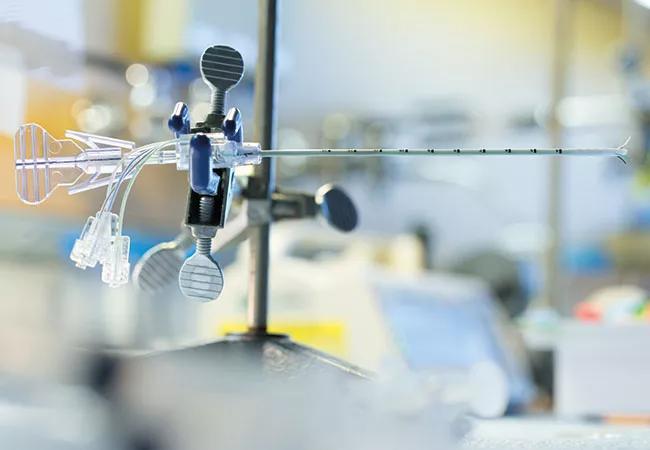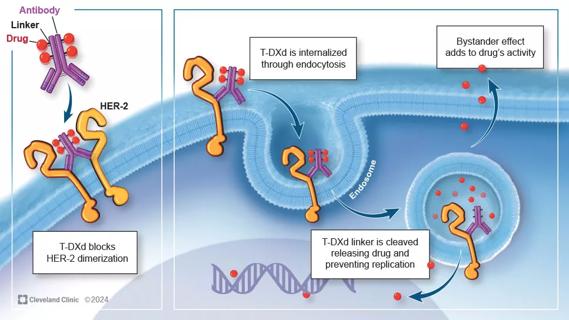Path cleared for use of Cleveland Multiport Catheter in IND-based trials

A novel convection-enhanced delivery (CED) device developed under the leadership of Cleveland Clinic neurosurgeon Michael Vogelbaum, MD, PhD, has received FDA 510(k) clearance as a therapeutic delivery device.
Advertisement
Cleveland Clinic is a non-profit academic medical center. Advertising on our site helps support our mission. We do not endorse non-Cleveland Clinic products or services. Policy
The device, known as the Cleveland Multiport Catheter (CMC), features four microcatheters (see photo above) and was designed for higher-volume drug distribution to glioma tumors and tumor-infiltrated brain tissue.
FDA clearance was granted in late March 2017. While no therapeutic has yet received FDA approval for direct delivery into brain parenchyma, “this clearance of the CMC is important to developers of drugs and biologics for direct delivery to the CNS, as they are looking to use an FDA-cleared catheter for their IND-based clinical trials,” explains Dr. Vogelbaum, Associate Director of Cleveland Clinic’s Rose Ella Burkhardt Brain Tumor and Neuro-Oncology Center and Professor of Neurosurgery at Cleveland Clinic Lerner College of Medicine.
The rationale and history behind the CMC are detailed in a previous Consult QD post. Dr. Vogelbaum and colleagues are accumulating experience with the CMC through a first-in-human clinical trial of the catheter at Cleveland Clinic. Since the first patient was treated in December 2014, 11 patients with glioma have completed treatment with the device under the trial’s investigational protocol.
For these procedures, two CMC microcatheters have been placed in each patient using conventional neurosurgical stereotactic techniques. Topotecan is infused along with a gadolinium tracer into tumor and/or tumor-infiltrated brain tissue via the microcatheters for up to 96 hours. Intermittent MRI monitoring has shown that the infusions have produced widespread distribution of drug and tracer into tumor-infiltrated brain.
Advertisement
“The extent of brain tissue covered and the reliability of the technique in these patients to date are largely unparalleled by past experience with other CED devices,” notes Dr. Vogelbaum.
Additional investigations are continuing to determine optimal parameters for use of the CMC in solid tumors and in tumor-infiltrated brain. Use for treatment of other conditions affecting the brain and CNS is also being explored.
Disclosure: Dr. Vogelbaum is an inventor and patent holder of the Cleveland Multiport Catheter (CMC). He is also founder and Chief Medical Officer of Infuseon Therapeutics Inc, which leads clinical development of the CMC. He holds equity and royalty interests in these entities. His participation in the CMC’s clinical development is covered by a Cleveland Clinic-approved conflict management plan.
Advertisement
Advertisement

First-of-its-kind research investigates the viability of standard screening to reduce the burden of late-stage cancer diagnoses

Global R&D efforts expanding first-line and relapse therapy options for patients

Study demonstrates ability to reduce patients’ reliance on phlebotomies to stabilize hematocrit levels

A case study on the value of access to novel therapies through clinical trials

Findings highlight an association between obesity and an increased incidence of moderate-severe disease

Cleveland Clinic Cancer Institute takes multi-faceted approach to increasing clinical trial access 23456

Key learnings from DESTINY trials

Overall survival in patients treated since 2008 is nearly 20% higher than in earlier patients